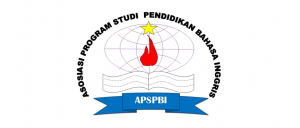O’Speak Version 1.0: A New Tool to Measure Segmental Pronunciation Features
DOI:
https://doi.org/10.31002/metathesis.v8i1.494Keywords:
automated pronunciation evaluation, segmental features, human rating, o’speakAbstract
The rapid enhancement of technology has made it possible to integrate technology and L2 pronunciation assessment. While the investigation of L2 pronunciation was considered vital in English Language Teaching, assessing pronunciation is granted the least attention. This study attempts to discuss the roles and impacts of O’Speak version 1.0 as an automated pronunciation tool and compare it with human ratings while assessing L2 segmental pronunciation features uttered by Indonesian learners of English. This study aims to pilot an android-based pronunciation test, namely, O’Speak, which was developed using Feuerstein’s Mediated Learning Experience principles. Performed under a quasi-experimental research design, this study ran an independent two-sample t-test involving 50 participants. The study showed that there was no statistically significant difference between O’Speak and human ratings in the segmental pronunciation assessment. This indicates that a new tool functions equally with the ability that human rating has. During the study, this study identified some caveats shown by the human rating that leads to its ability to be equal to O’Speak, and these include teaching experience, hallo effect, and rating experience.
Downloads
Published
How to Cite
Issue
Section
License
Copyright (c) 2024 Metathesis: Journal of English Language, Literature, and Teaching

This work is licensed under a Creative Commons Attribution-ShareAlike 4.0 International License.
The copyright of the received article shall be assigned to the journal as the publisher of the journal. The intended copyright includes the right to publish the article in various forms (including reprints). The journal maintains the publishing rights to the published articles. Therefore, the author must submit a statement of the Copyright Transfer Agreement.

This work is licensed under a Creative Commons Attribution-ShareAlike 4.0 International License.
In line with the license, authors are allowed to share and adapt the material. In addition, the material must be given appropriate credit, provided with a link to the license, and indicated if changes were made. If authors remix, transform or build upon the material, authors must distribute their contributions under the same license as the original.



